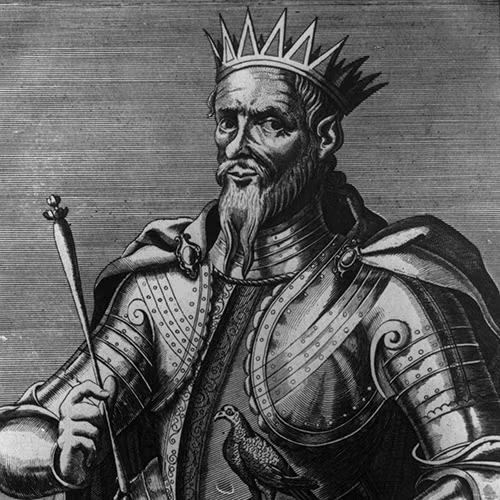
Table of Contents
Who Was Attila the Hun?
Attila the Hun, the 5th-century king of the Hunnic Empire, commanded vast territories extending from the Black Sea to the Mediterranean, instilling fear throughout the late Roman Empire. Known as “Flagellum Dei,” meaning “Scourge of God” in Latin, Attila consolidated his power by assassinating his brother, Bleda, to become the sole ruler of the Huns. Under his leadership, the Hunnic Empire expanded to incorporate numerous Germanic tribes, and Attila launched significant military campaigns against the Eastern Roman Empire, though he notably refrained from invading the cities of Constantinople and Rome. His death in 453 left a fragmented legacy and a divided family.
Early Life and Ascension to Power
Born around 406 in Pannonia, a province of the Roman Empire (modern-day Transdanubia, Hungary), Attila was appointed co-ruler of the Huns alongside his brother Bleda in 434. After his brother’s murder in 445, Attila assumed full control of the Hunnic Empire. He successfully united various tribes within the Hun kingdom and was regarded as a fair leader by his people. However, his reputation was equally marked by his aggressiveness and ruthlessness. Attila expanded the Hunnic territory to include many Germanic tribes and initiated campaigns against the Eastern Roman Empire, devastating regions from the Black Sea to the Mediterranean, further solidifying his fearsome reputation throughout the Roman territories.
The Wrath of Attila the Hun
Attila was notorious for his imposing presence; historian Edward Gibbon described his fierce gaze and his tendency to roll his eyes in a manner that amplified the terror he evoked in others. He claimed possession of the sword of Mars, the Roman god of war, to further intimidate his adversaries. In 434, Roman Emperor Theodosius II paid tribute to Attila, effectively serving as protection money. Despite this arrangement, Attila violated the peace treaty and launched assaults on towns along the Danube River, ultimately devastating Naissus and Serdica. As he advanced toward Constantinople, he engaged and defeated the Eastern Roman forces in several battles. However, upon reaching the capital, Attila recognized the impossibility of breaching its formidable defenses, designed specifically to withstand an assault from his primarily cavalry-based army. Consequently, he redirected his military efforts to obliterate what remained of the Eastern Roman military presence.
In 441, Attila invaded the Balkans once more. When Theodosius sought peace terms, Attila demanded a threefold increase in tribute. By 447, he struck again, negotiating yet another treaty with the empire. When the newly appointed Eastern Roman Emperor, Marcian, and Western Roman Emperor Valentinian III declined to pay further tribute, Attila amassed a formidable army of approximately half a million troops and invaded Gaul (modern-day France). His campaign culminated in a significant defeat at the Battle of Chalons in 451 at the hands of General Aetius, who allied with the Visigoths.
Final Years and Legacy
Attila, often referred to as “Flagellum Dei,” launched an invasion of northern Italy in 452 but chose to spare the city of Rome due to diplomatic efforts from Pope Leo I and the weakened state of his own forces. Legend has it that saints Peter and Paul appeared to Attila, threatening him if he did not reach an accord with Pope Leo I. Attila passed away in 453, before he could make another attempt to conquer Italy.
His death left a fractured family and an empire in disarray. His appointed successor, Ellac, along with his other sons, Dengizich and Ernakh, engaged in power struggles over their father’s empire, which ultimately became divided among them.
Attila the Hun is often remembered for his stark proclamation regarding his reign: “There, where I have passed, the grass will never grow again.” This statement encapsulates the lasting impact of his formidable presence on the territories he conquered.
